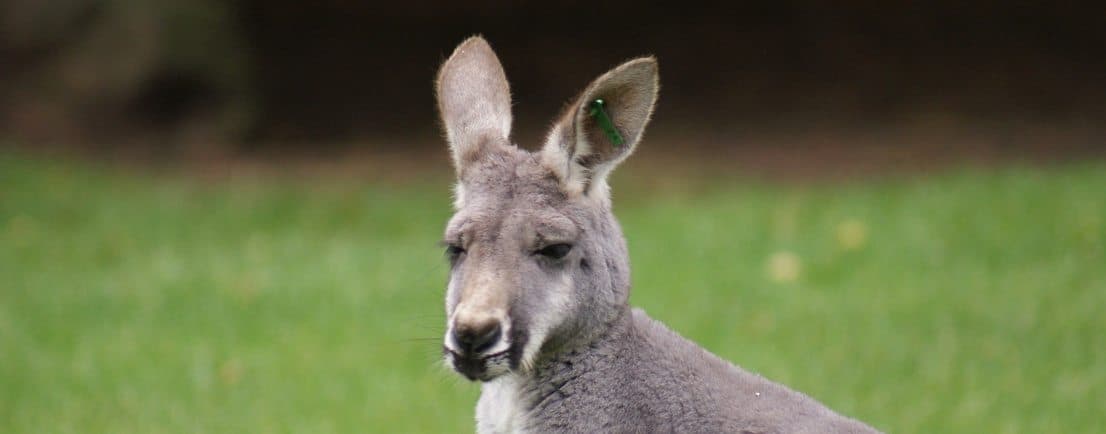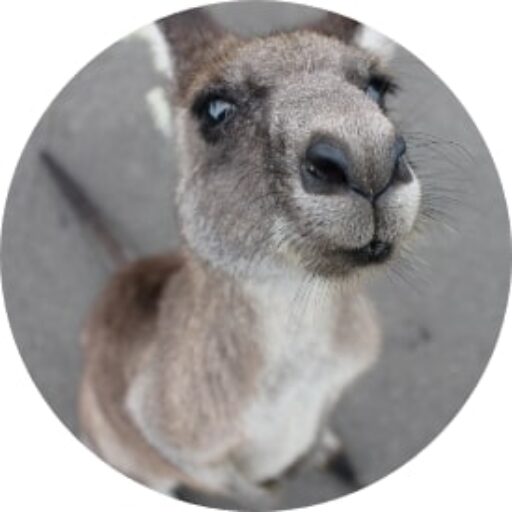
Australian Wildlife Sanctuaries: Protecting and Preserving Unique Wildlife
Australia is home to some of the world’s most unique and diverse wildlife. Many of its native animals, reptiles, and birds cannot be found anywhere else on Earth, making their preservation and protection crucial. As such, Australians take great pride in their native wildlife, and there is a strong commitment to educating the public and tourists about these species and the habitats they rely on.
Wildlife Sanctuaries: Educating and Protecting Australia's Wildlife
Australia boasts numerous wildlife sanctuaries, both privately and government-run, which play a key role in the conservation of native species. Many of these sanctuaries work closely with the Australian Wildlife Conservancy, focusing on protecting endangered species and their habitats while also offering educational experiences for visitors.
These sanctuaries function much like zoos, where visitors can see native animals up close. Daily shows by zookeepers and Indigenous Australians provide a unique opportunity to learn about the cultural history of Australia, as well as the needs of its animals. Popular attractions include bird shows where visitors can witness majestic eagles in flight. Each enclosure is accompanied by informative plaques that provide details about the animal, its natural habitat, and the threats it faces in the wild.
Supporting Conservation Efforts
A significant focus of Australian wildlife sanctuaries is on the conservation of endangered species. Many species in Australia are at risk, and sanctuaries, along with the Australian Wildlife Conservancy, are working to reverse this trend. Through breeding programs, animals are bred and raised in controlled environments, with the eventual goal of releasing them back into the wild. This work is vital for maintaining healthy populations of species that are struggling to survive in their natural habitats.
Emergency Care and Veterinary Services
In addition to breeding and conservation efforts, wildlife sanctuaries also provide crucial veterinary care for injured or sick animals. Many native species suffer from injuries caused by traffic accidents, dog attacks, or natural disasters like bushfires and floods. Sanctuaries are equipped with their own veterinary facilities, ensuring that animals receive prompt care and attention. Wildlife carers are always in high demand to assist with rescue efforts, rehabilitation, and release programs.
A Great Day Out for the Whole Family
Visiting a wildlife sanctuary is not only an educational experience, but also a fantastic way to spend time with family and friends. The money raised through entry fees and donations directly supports the sanctuary’s efforts in animal protection, conservation, and research. By visiting, you’re helping to fund important programs that ensure the survival of Australia's unique wildlife for future generations to enjoy.
Whether you're passionate about conservation or simply want to learn more about Australia's incredible creatures, a visit to a wildlife sanctuary is an experience that is both rewarding and unforgettable.
One of the most popular Wildlife Sanctuaries in Australia is Healesville Sanctuary in Victories north eastern region. A short drive from Melbourne. As well as Healesville there are other Sanctuaries around Australia, these include:
Popular Wildlife Sanctuaries
- Parrot Garden Sanctuary
- Kalamurina Wildlife Sanctuary
- Buckaringa Wildlife Sanctuary
- Mornington Sanctuary
If you like to volunteer with Australian wildlife, please contact us!
There are many Sanctuaries throughout Australia and definitely one near you. So come and support Australia's Native Wildlife and have a great day out or start volunteering with them.
Bimbimbie Fauna and Picnic Park
Wildlife park located at Mount Burnett, Victoria. Features an animal nursery, native animals and a drive-in picnic/BBQ park.
Victoria's Three Great Zoos
Each of Victoria's 3 Zoos has an innovative master plan that displays a representative sample of the world's fauna and flora in bioclimatic zones.
Taronga Zoo & Western Plains Zoo
Both Zoos are managed by the Zoological Parks Board of New South Wales. Maps, admission rates, fast facts and more.
Adelaide Zoo
Open every day of the year from 9.30 a.m. until 5.00 p.m. and until 8.00p.m. on some evenings during summer.
Crocodylus Park
Facilities for both tourism and research, built on 25 years of experience with crocodiles. Exceling at both public education and research on wildlife conservation, management and sustainable use.
Currumbin Wildlife Sanctuary
Sculptured from seventy acres of Australian bushland, Currumbin Wildlife Sanctuary is home to hundreds of native birds and animals, many of them endangered.
Marapana Wildlife World
Western Australia's first drive-thru animal park, only one hours scenic drive from Perth. Enjoy meeting and feeding deer, kangaroos, koalas, dine at the restaurant and have a great day out.
Perth Zoo - The Great Escape
All about Perth Zoo, including a description of the wildlife, admission prices, education, major exhibits, animal feeding times, facilties and more.
Talune Wildlife Park
Offers you a chance to get near Tassie's wildlife. Situated 6 km south of the small village of Cygnet.
Carrowong Fauna Sanctuary
Cairns Queensland's only real sanctuary with NO cages or fences. Our guests are professionally guided through old growth rainforest. Naturally! Your small donation will go to further purchases of endangered species habiats.
Hartley's Creek Crocodile Farm
Tourist attraction between Cairns and Port Douglas, Queensland, Australia. Educational crocodile shows daily. Crocodile conservation information for saltwater crocodiles.
Warrawong Earth Sanctuary
Warrawong Earth Sanctuary offers a true Australian Wildlife Experience in the Adelaide Hills, only 25 minutes from the centre of Adelaide.
Cleland Wildlife Park
Cleland Wildlife Park Just 12 kilometres from Adelaide City centre, Cleland Conservation Park conserves a vital area of natural bushland on the Adelaide Hills face and includes the internationally popular Cleland Wildlife Park, the viewing platform of Mt Lofty Summit and scenic Waterfall Gully. The area has a rich history of Aboriginal occupation and European settlement
Healesville Sanctuary
Healesville Wildlife Sanctuary
Healesville Sanctuary is recognised as one of Australia's biggest tourists attractions. It is home to over 200 species of Australian flora and fauna. Here they offer educational programs and exhibitions, including the increasingly popular birds of prey show.
Healesville Sanctuary has its own health centre, caring for injured and sick wildlife. Many animals injured in the Victorian Bush Fires in Febuary 2009 have been brought to Healesville for treatment. Once treated by a veterinarian the healing animals will be sent to a volunteer wildlife carer who will continue to care for them until the animal is strong enough to return to the wild.
The Sanctuary is located on 30 hectares of land and only one hour from Melbourne. Healesville itself is a suburb of the stunning Yarra Valley wine region. A visit to Healesville Sanctuary is a great day out for all of the family, with many more attractions right on its door step.
Priding itself on its advancements in eco tourism, Healesville is at the for front of educating the public as well as tourists on the importance of Australia's eco system. Healesville Wildlife Sanctuary was recently awarded the Advanced Accreditation in Eco Tourism by Eco Tourism Australia. This award proves to tourists that the Sanctuary has a commitment to natural area management and ecological sustainability.
Healesville was originally founded in 1921, for research purposes by Doctor Colin Mackenzie. Healesville Sanctuary was to be names the Australian Institute of Anatomy. The land was handed back to the Healesville council in 1927, it wasn't until 1934 that the Healesville Wildlife Sanctuary was opened to the Australian Public. To be an Australian park dedicated to the protection and welfare of Australia's native flora and fauna.
Involved in many breeding programs, Healesville Sanctuary helps to breed endangered species and slowly release them back to the wild. This helps to increase numbers. They are successfully running these programs for many endangered species such as the Brush-tailed Rock Wallaby, Helmeted Honey eater, Mountain Pygmy Possum, Orange-bellied Parrot and the critically endangered Spotted Tree Frog.
Healesville has recently been in the news for being the first Sanctuary to successfully breed Platypus in captivity. This is a huge step forward for the Australian Platypus population, and an accomplishment that Healesville Sanctuary should be very proud of.
There are many things to see and do at Healesville. Each day there is an opportunity to meet the Zoo Keepers who work on the grounds, to meet the animals they care for and learn a little more about them.
Open to the public 9am to 5pm seven days a week. The park only closes to the public on Christmas and Boxing Day. A fantastic day trip for tourists, families and individuals a like.



